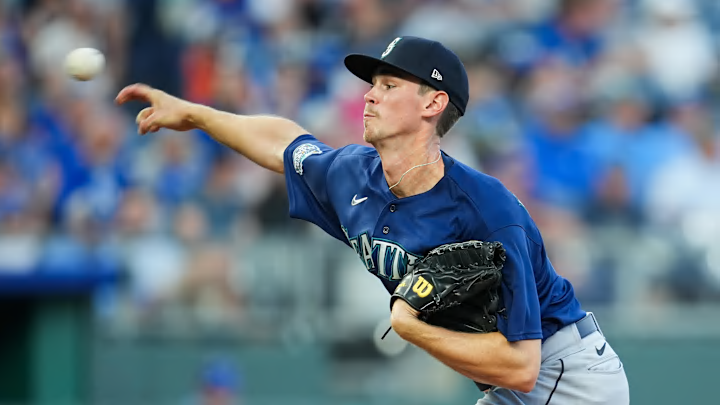The most likely option for Kansas City is Emerson Hancock.
If the Seattle Mariners continue down their path toward acquiring Yamamoto, they are likely going to want to move at least one starter, possibly two. Emerson Hancock seems like the most likely option. Hancock made his major league debut in August but quickly found his way onto the 60-day injured list with a shoulder strain. This injury has placed him in a tough spot; he is now on the outside looking in. While Hancock sat out, rookie starters Woo and Miller did everything necessary to earn their spots in the rotation, making Hancock somewhat expendable.
In the 2020 draft, the Mariners selected Hancock sixth overall out of the University of Georgia. Hancock quickly moved from High-A to Double-A in 2021 and played in the All-Star Futures Game. But shoulder troubles started, and the organization shut him down. At the time, he was the number four prospect in the Mariners system and the 36th-best prospect per MLB Pipeline.
Reports from 2021 and 2023 suggest Hancock’s shoulder injuries were each Grade 1 plus with no tears or damage, but the consistent injuries raise the question of his future. The Royals have invested in a pitcher with shoulder injuries this off-season in Kyle Wright and could potentially have some insight into how to treat these injuries. They have certainly dealt with quite a few shoulder injuries in recent years, with 2023 starter Brad Keller suffering a similar issue.
In June, Hancock was pitching well in Double-A. He was named the organization's Minor League Pitcher of the Month, winning four of five starts with a 1.74 ERA. He issued just six walks to 29 strikeouts over the run. Similar to Gilbert, Hancock does a great job of keeping the ball in the yard (.83 HR/9), which would appeal greatly to the Royals front office. Right now, Hancock relies on a mid-90s four-seam fastball combined with a hard-thrown curve and a firm, fastball-like slider. Prior to his injury, he was developing a change-up, which could eventually be an out-pitch.
For the Royals, there is a lot of risk here. Hancock has had two shoulder strains in three seasons, and at this point in his development, he appears likely to be a middle-to-back end starter. This said, compared with Gilbert, who would come at a significant cost, Hancock will be the significantly more affordable Mariner to target. The question here would be, What does Seattle want in return?
